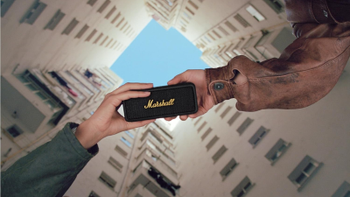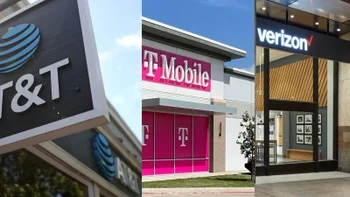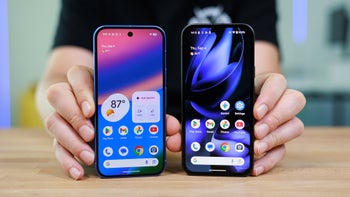A thought on Apple's naming policy
This article may contain personal views and opinion from the author.

There has been some confusion over the naming of the new iPhone, and of course we all remember the confusion over the change in naming convention with the new iPad, but we have a thought about how Apple names its products, and how that may look in the future. As you might expect, there has been chatter recently about what the new iPhone will be named.
The most commonly used name in referencing the device has been the iPhone 5, which makes sense only because the numbers 3 and 4 have been used in previous iPhones, but really makes no sense if you go any deeper than that. The first iPhone with a 3 in the name was the 3G, which was actually the 2nd generation iPhone. The 3Gs was the 3rd generation. The iPhone 4 has been the only one to use the number to directly reference the generation of hardware, as it was the 4th generation iPhone. The 5th generation iPhone was then the iPhone 4S. This means that there is little reason why we could expect the new iPhone to be called the iPhone 5, unless it was in reference to the fact that it is being released 5 years after the first iPhone, which is an odd, but plausible, reason to name a device. Or, the 5 could reference the new 5th row of app icons on the iPhone homescreen, but that's nowhere close to being good a reason to name a device a certain way. And, of course, we're not even close to 5G mobile networks, so Apple would be out of luck making a connection there.
The next theory was that Apple would call the device the iPhone 6 in reference to the generation of hardware, but that idea has its own troubles, because casual users could easily be confused if Apple is selling the iPhone 6 next to the iPhone 4 and 4S, simply because the numbers aren't sequential. It's a small point, but one that seems like something Apple would want to avoid, even if this isn't the Apple run by the OCD Steve Jobs.
Then there is the idea that Apple would go the same route that it has with the iPad and remove the numbering system completely, and just call it the new iPhone. The latest leak seems to support this theory, and to an extent, the idea works with the conventional naming practices that Apple has used over the years.
Apple has almost never used any indicator with names to differentiate between products from one year to the next. While we may use other indicators to make references easier, like saying the 5th gen iPod, or 2011 MacBook Pro, Apple just calls the products the same thing every year. There every year there is a new MacBook Pro, and every year it is called the MacBook Pro.
Of course, the trouble with translating this to Apple's mobile products is that unlike all of Apple's other products, the iPhone and iPad sell next to older generations of hardware. The new MacBook never sells against the last gen MacBook in Apple Stores, neither does the new iMac or iPod. That's not the case with the iPhone and iPad. The way Apple has set up the pricing structure, it looks like there will be two generations of iPad on the market - the new iPad at $499 and the last generation iPad at $399. This could lead to a relatively easy transition next year, when there will be a new iPad, and this year's new iPad will have to change its name. It's unlikely that Apple would call it the iPad Classic, but it will get some new name that can be passed along from year to year, like the iPad Lite, or iPad Silver (with the new iPad being Gold), or some other catchy name.
The more troubling area for Apple would be the iPhones. If it does come to pass that this year's iPhone is called the new iPhone, that will mean a bit more work for Apple come next year. Next year, it would have another new iPhone, and it could use the same naming convention as the iPad and call this year's iPhone the iPhone Lite or iPhone Silver or whatever. The trouble comes with the fact that Apple sells three models of iPhone at the same time - the current generation starting at $199, the last generation at $99, and the iPhone from two generations back for free on contract.
Apple could completely rebrand the iPhone 4S next year to be the iPhone Budget, or iPhone Zero, or iPhone Bronze, but that would kill all of the marketing and name recognition it has built up for the iPhone 4S over the course of two years. But, maybe Apple doesn't really care too much about that. Apple doesn't always sell the older iPhones in its Apple Stores. Sometimes an Apple Store will have stock of older iPhones, but more often it will only be the newest generation of hardware, and Apple will leave the older versions to the website and carrier stores. This means that there is less confusion in Apple Stores because of fewer products being displayed side-by-side. On the website, Apple gives the vast majority of the screen space to the new model, just as carriers give the most shelf space to the newest model. In general, if a customer really wants an older version of the iPhone, they have to directly ask for it or know beforehand that's what they want.
What gets a little tricky for the naming scheme is if Apple officially keeps the word "new" in the moniker, which it has so far with the iPad. It is almost 6 months after the release of the 3rd generation iPad, and while technically it is still the "newest" iPad, it's hard to say that it is really "new". Of course, Apple has never really cared about semantics like that, as we've seen over the years with Apple's stretching of the definition of the word "magic". In the end, Apple looks to be striving towards name consistency. It doesn't want customers to need to know anything before walking into an Apple Store, except to say, "I want the new iPhone." And, that's what they'll get.
Follow us on Google News














Things that are NOT allowed:
To help keep our community safe and free from spam, we apply temporary limits to newly created accounts: